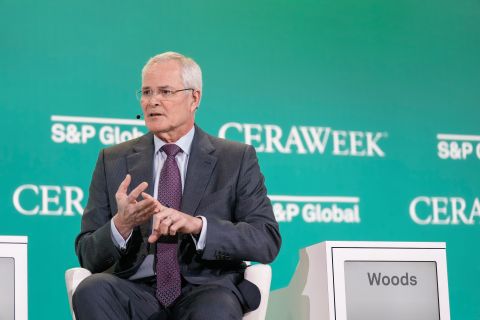Mexico, with some 133 million citizens and severe air quality issues in many of its major cities—especially its capital, Mexico City—continues to embrace electric mobility, or e-mobility.
That e-mobility push and transition away from combustion engines will have a significant impact on two fronts.
First, increased domestic production of hybrids and, more importantly, electric vehicles (EVs) will spur employment and economic opportunities.
Second, fewer vehicles using fossil fuels will eventually reduce the production of CO2 and the ill effects its release has on the health of many citizens in Mexico—and beyond, since CO2 isn’t contained by borders.
From introduction to production
While some pundits argue EVs can’t truly be considered carbon neutral since the primary energy source is derived from natural gas and not renewable energy, that in no way should discredit Mexico’s e-mobility push, which is still in its infancy.
Mexico has come a long way since 2010 when Toyota started to sell its Prius hybrid model. While the introduction of the model jump-started Mexico’s e-mobility push, the release of the Nissan Leaf 100% EV one year later raised the e-mobility bar with the introduction of vehicles that don’t rely on gasoline or diesel.
Fast forward to 2023, and the production of EVs in Mexico is on track to surpass the 200,000 milestone after achieving production of over 158,000 EVs in 2020-2022, according to data revealed by InTiCa Systems. Mexican officials have already floated the idea of reaching the 500,000 milestone by 2030, according to InTiCa.
Beyond the aforementioned Asian hybrid and EV models, customers looking to move away from combustion engine vehicles in Mexico can choose from models like the Ford Fusion hybrid, the Ford Mustang Mach-E (the first EV made in Mexico), the Audi Q5 hybrid, the BMW 330 hybrid, the Chevrolet Blazer EV and Equinox EV, as well as Build Your Dream (BYD) Yuan Plus EV, among other options.
While the bulge bracket name in the EV space, Tesla, has also introduced its EV to the Mexican market, the U.S.-based company has gone one step further. This year, Tesla unveiled plans for a mega factory to be located in Santa Catarina in Mexico’s northern Nuevo León state. Tesla eyes building the plant in less than 9.5 months, which was the time it took to build its plant in Shanghai. Under such a timeline, production from Tesla’s Mexico plant could start sometime in 2024.
Complaints about cost
But it wouldn’t be prudent to talk about Mexico’s e-mobility push without mentioning headwinds, many of which continue to haunt even developed regions like North America and Europe.
RELATED
Mexico Embracing E-mobility, but Headwinds Persist
The elevated prices of EVs and the lack of e-mobility infrastructure are the main complaints of both existing and potential EV customers.
The price of an EV in developed North America and Europe is out of reach for many. In developing Mexico, it’s the same. As such, many EV purchases in Mexico are by people with the financial means to do so and, in many cases, done to highlight their class status while boasting about their efforts to reduce their carbon footprint.
Unlike the U.S., where many people live in homes, Mexico’s economic capital, Mexico City, is dominated by mid-rise and high-rise multifamily residences, especially in the more affluent parts of the city like Polanco. Developing charging stations for large multifamily developments is doable but much more complex than a simple garage hook-up in a single-family dwelling in the States.
In earthquake-prone Mexico City, many residents are likely to opt for a flat or townhome built to withstand an earthquake rather than one that had a charging station in the underground parking garage.
Away from home, the charging options are limited. Most office buildings don’t offer charging stations and Liverpool, an upscale mall concept, seems the best and only option. Where’s Whole Food’s parking lot when you want and need it? Well, it’s not in Mexico—at least not yet.
While gasoline prices in Mexico, which are 1.3x the average price in the U.S., have helped to push customers to hybrids since they are cheaper than EVs, the e-mobility headwinds are keeping them out of EVs for now.
Further development of Mexico’s e-mobility movement will depend on customers’ ability to buy and operate the technology, a clear regulatory political framework to allow the technology to be bought and even subsidized in the early days, and then development of the EV industry itself.
Mexico’s e-mobility push is impressive, but many pundits say the country is easily 10 years behind developments in the U.S., if not more. If Mexico, like North America and Europe, builds the necessary e-mobility infrastructure, customers may come around to EVs—but only if “the price is right.”
Recommended Reading
Life on the Edge: Surge of Activity Ignites the Northern Midland Basin
2024-04-03 - Once a company with low outside expectations, Surge Energy is now a premier private producer in one of the world’s top shale plays.
Enverus: 1Q Upstream Deals Hit $51B, but Consolidation is Slowing
2024-04-23 - Oil and gas dealmaking continued at a high clip in the first quarter, especially in the Permian Basin. But a thinning list of potential takeout targets, and an invigorated Federal Trade Commission, are chilling the red-hot M&A market.
CEO Darren Woods: What’s Driving Permian M&A for Exxon, Other E&Ps
2024-03-18 - Since acquiring XTO for $36 billion in 2010, Exxon Mobil has gotten better at drilling unconventional shale plays. But it needed Pioneer’s high-quality acreage to keep running in the Permian Basin, CEO Darren Woods said at CERAWeek by S&P Global.
EIA: Permian, Bakken Associated Gas Growth Pressures NatGas Producers
2024-04-18 - Near-record associated gas volumes from U.S. oil basins continue to put pressure on dry gas producers, which are curtailing output and cutting rigs.
Uinta Basin's XCL Seeks FTC OK to Buy Altamont Energy
2024-03-07 - XCL Resources is seeking approval from the Federal Trade Commission to acquire fellow Utah producer Altamont Energy LLC.






